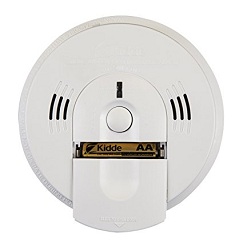
Home assistants developed by Amazon, Google and others are changing how consumers interact with connected home devices, including intruder alarms. More alarm systems now offer a voice-command option, allowing users to use Alexa and other smart assistants to arm and disarm their alarm systems. According to IHS Markit, the share of voice-operated alarm systems is expected to increase at a compound annual growth rate (CAGR) of 7 percent from 2017 through 2022.
Internet of Things (IoT) technologies have profoundly influenced the way consumers select home security systems, leading to increased connectivity and integration with voice assistants and other smart devices. As consumers get more comfortable using voice features, the share of alarm systems relying on more traditional methods will decline.
Smart revolution
Using voice commands to operate intruder alarm systems makes the process easier and quicker, as it eliminates the need to physically interact with the alarm itself. With voice commands, there is no need to locate a key fob or type a pin code into a keypad. Voice features can also be useful when a keypad or a smartphone malfunctions, or if the key fob is misplaced. Likewise, arming the system for the night can be done from a user’s bedroom, without the need to physically engage with the security system.
Voice is here to stay
Currently available voice features in intruder alarms offer a basic level of interaction. The user speaks a predetermined command to disarm the system, and the voice assistant then asks for a security password or a pin code. The password feature was added, so strangers standing outside users’ homes could not instruct the systems to disarm. This process could be improved with the use of advanced voice-recognition technologies, which would eliminate the need for dedicated passwords. The system would instead use voice biometrics to verify the user’s identity, which could be done automatically, simplifying the process.
Although voice interaction currently occurs while users are physically in their homes, in-car entertainment systems of the future could also be used to disarm home security systems on the road or while pulling into the driveway.
A future with challenges
A number of challenges preclude voice features from becoming a more popular method of operating intruder alarms. For example, the need to use pin codes prolongs the process. Some non-tech-savvy users might also struggle to communicate with voice assistants, as they require the use of specific commands for the devices to listen. Another downside is their reliance on home Wifi connections to connect and process commands: if the home network goes down, the assistant stops working.
Should voice recognition become available in home alarm systems, additional privacy concerns will arise, including where the voice samples are stored — either in the cloud or on local servers operated by alarm companies. Currently, the voice functionality of home assistants requires users to directly address their smart home assistants. On a more advanced level, users would not have to directly address the voice assistant or the control panel to disarm the system; instead, once the assistant recognised the voices in the household, it could automatically disarm the system. However, this type of functionality could lead to even more privacy concerns, as smart devices actively listen for house members’ activity.
Added value
Enhanced connectivity and functionality have become important differentiating factors for intruder alarm systems. As more intruder alarm manufacturers integrate voice assistants into their offerings, adding a smart device to an intruder-alarm package may create an additional incentive to purchasing an alarm system. On the other hand, manufacturers could attempt to acquire companies that specialise in voice recognition software — or partner with providers of these products — to speed the introduction of advanced voice features.
However, many current users of intruder alarm systems are still reluctant to test the benefits of voice interaction or connect smart devices to intruder alarm systems. Installers will need to focus on changing these perceptions, by explaining how smart devices can simplify interactions with the intruder alarm systems. One way to overcome this hurdle, according to IHS analysts, is to bundle products with smart devices, offering all the necessary configuration support needed to facilitate a smooth transition to connected systems.











